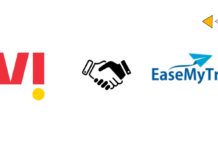Excellent web design establishes excellent connections with website visitors. Therefore, if your company’s website has attractive and practical designs, your client conversion rates may increase. Considering this, quality web design plays a highly significant role in a small business’s success. When launching a website, it is therefore pivotal to your success to properly use it to convey your brand’s identity.
Your website is your primary tool for the successful conduction of sales and the marketing of your products or services, so it is vital that it effectively reflects your brand by being unique and sending the intended message to your target audience. The best way to ensure that a website is designed properly is to employ a competent and trustworthy web design firm. Fortunately, there are a number of web design companies in San Francisco on the market that provide excellent services at reasonable rates. You’ll have to put aside some funds dedicated specifically for web design, but with the right strategies in place and the right web design team working for you, you should see a swift and impressive return on your investment.
The key to an effective leveraging of your website is the establishment of an emotional link between your audience and your brand. But how do you build this connection? Let’s take a look.
Do The Necessary Research
Before starting your own project, check out your competition to see what methods they are using to emotionally connect to their audience. You will also need to research what is happening in the market, especially if you are in the cloud or website hosting business, what works effectively when it comes to current marketing approaches, and how do other providers’ websites’ architecture work to distinguish their brand? Consider the following questions as you evaluate the latest identity and website design:
- Does your website solidly convey what your brand stands for?
- By simply browsing your site, will a visitor easily derive what value you are offering them?
- How well does your website promote your brand’s identity?
- Does the site adequately act as an extension of the company, its culture, business ethics, and its workforce?
- Does the website’s design clearly relay to the visitor what makes your company unique and sets them apart?
Overall, you will need to think about what you want a prospective customer to come away from your website have learned and experienced. Does your website convey your corporate values, and if one of your values is trust, does it clearly exude that attribute? We all get wrapped up in our everyday lives, so taking a look back to see if what we think we’re communicating to prospective clients is what they’re taking away from visiting our brand’s website is exceptionally important.
Know Your Brand And Your Company
Think about your brand identity and value proposition. If you are not certain what your company stands for, make sure you sit down and really think it through. You can do this by asking yourself some pertinent questions:
- What is the corporate mission statement of your business?
- What personality do you wish for your brand to illustrate?
- Who is your target audience? What do they believe in? What do they seek to find?
- What appeals to your prospective customers?
- What are your established buyer personas? Will the design of your site and your brand appeal to them?
Before you figure out how to convey your brand and its message to your audience, you must fully and intimately understand how you want the brand to be portrayed?
Determining Buyer Personas
If you don’t yet have customer personas established, now is the time to figure out who your target demographic is and what they want. This will assist you in determining how to contact them and convert them into paying consumers. Here are some questions to ask to help you identify your buyer personas:
- What is their age, gender, geographic location, marital status, child situation, household income, and any other relevant demographic information?
- What is their profession?
- Who do they spend their spare time with? What do they do in their free time?
- What problems are they seeking solutions for and how can you help find this solution?
- What marketing medium do the personas acquire their information regularly (social media, search engines, magazines, tv ads, etc.)
- What is the best method of communicating with and marketing to the personas?
- How well does the design of your site speak to the personas? How likely is your brand to persuade the persona to purchase specifically from you?
Final Thoughts
You’ve done your homework and worked out what your company stands for and how it’ll appeal to your customer personas. You’ve already created a brand identity by using your customer personas’ emotional beliefs, defining branding features, and checking ideas to ensure your logo and emotional web design are future-proof. It’s now time to build a website that can stand out. Your website should be a representation of your brand, evoke an emotional reaction from your customer personas, and function as an extension of your company’s culture.








